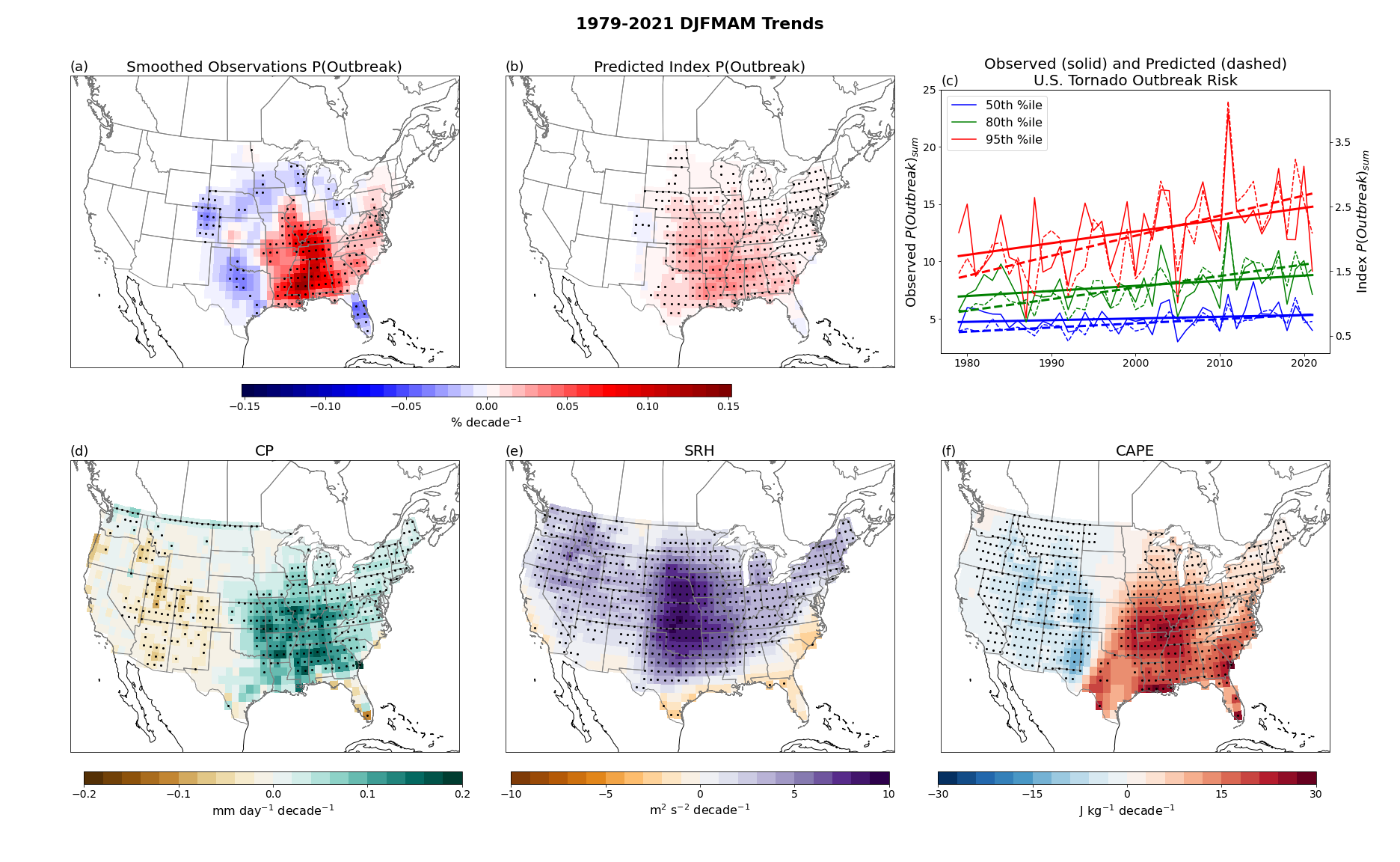Research
Description of my research endeavors and interests.
Teleconnections describe links between large-scale fluctuations within the climate system and remote surface impacts. The overarching goal of my research is to understand predictable climate variability via teleconnections, bridging topics like:
- dynamical mechanisms describing teleconnections
- subseasonal-to-seasonal (S2S) predictability and prediction
- climate risk assessment for high-impact extremes
Our understanding of teleconnections is incomplete, and it is unclear how teleconnections and their associated surface impacts might respond in a warming climate. I’m interested in developing a comprehensive view on climate processes, links, and impacts with a variety of approaches:
- hierarchal modeling frameworks
- statistical models
- causal networks
Great Plains LLJ Variability & Predictability
The Great Plains low-level jet (LLJ) is an important dynamical mechanism for transporting heat and moisture into the Plains-Midwest during the warm season. In Malloy and Kirtman (2020), we assessed current predictability of the Great Plains LLJ and its associated precipitation in a state-of-the-art climate forecast model. We found that climate forecast models have problems representing observed variability of the Great Plains LLJ beyond two weeks, which degrades rainfall prediction skill.
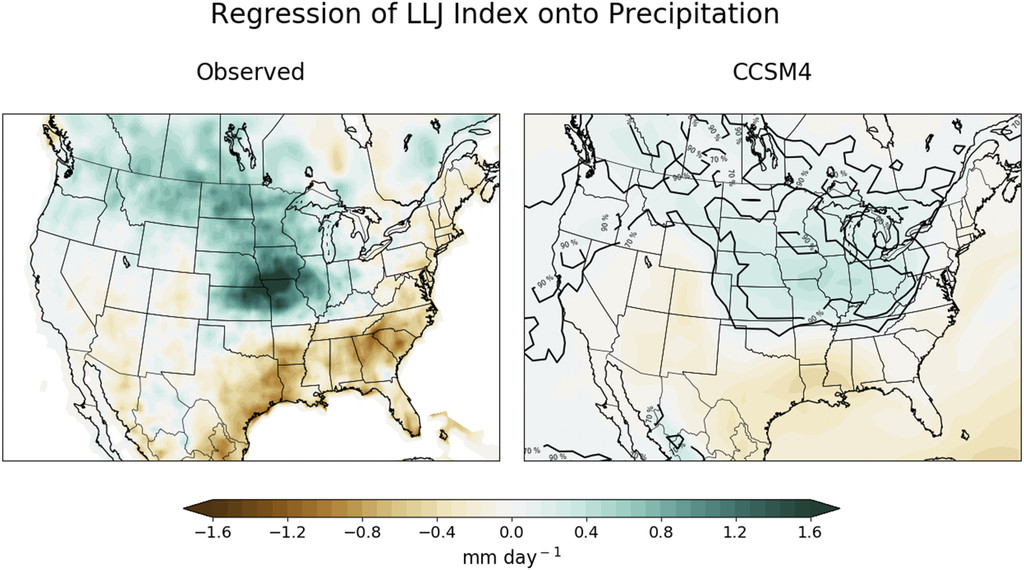
We identified consistent predictors associated with large-scale Great Plains LLJ variability: a strengthened Caribbean LLJ, negative Pacific-North American (PNA) teleconnection, warm phase of the El Niño-Southern Oscillation (El Niño), and a negative Atlantic Multidecadal Oscillation. The circulation predictors, the Caribbean LLJ and PNA, present the greatest opportunity for considering and assigning confidence in monthly forecasts.
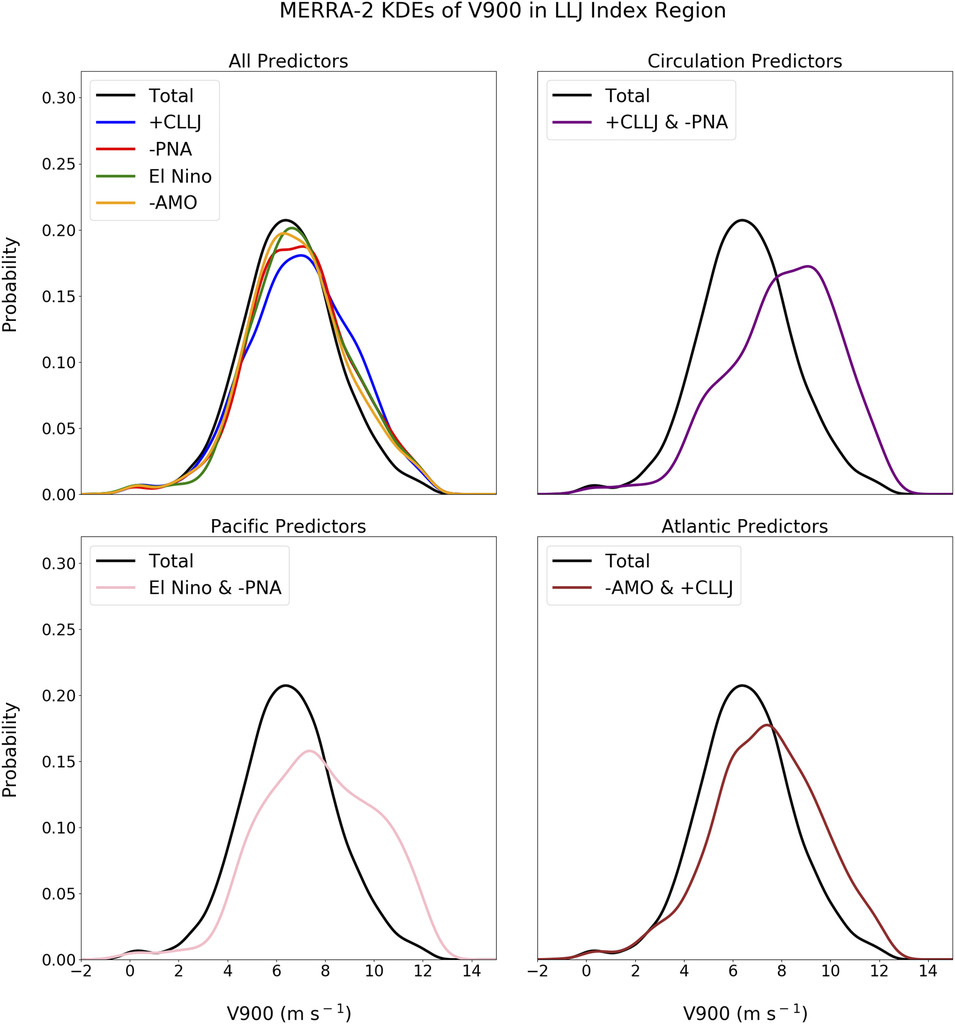
U.S. Summer Hydroclimate Predictability via Monsoon-forced Teleconnections
The East Asian monsoon (EAM) can excite a cross-Pacific Rossby wave train. We analyzed the EAM-forced teleconnection using observations and a hierarchy of climate models in Malloy and Kirtman (2022). Observations indicate a statistically significant relationship between a strong EAM and wet anomalies over U.S. west coast and Plains-Midwest, and ENSO modulates the EAM-forced teleconnection over North America.
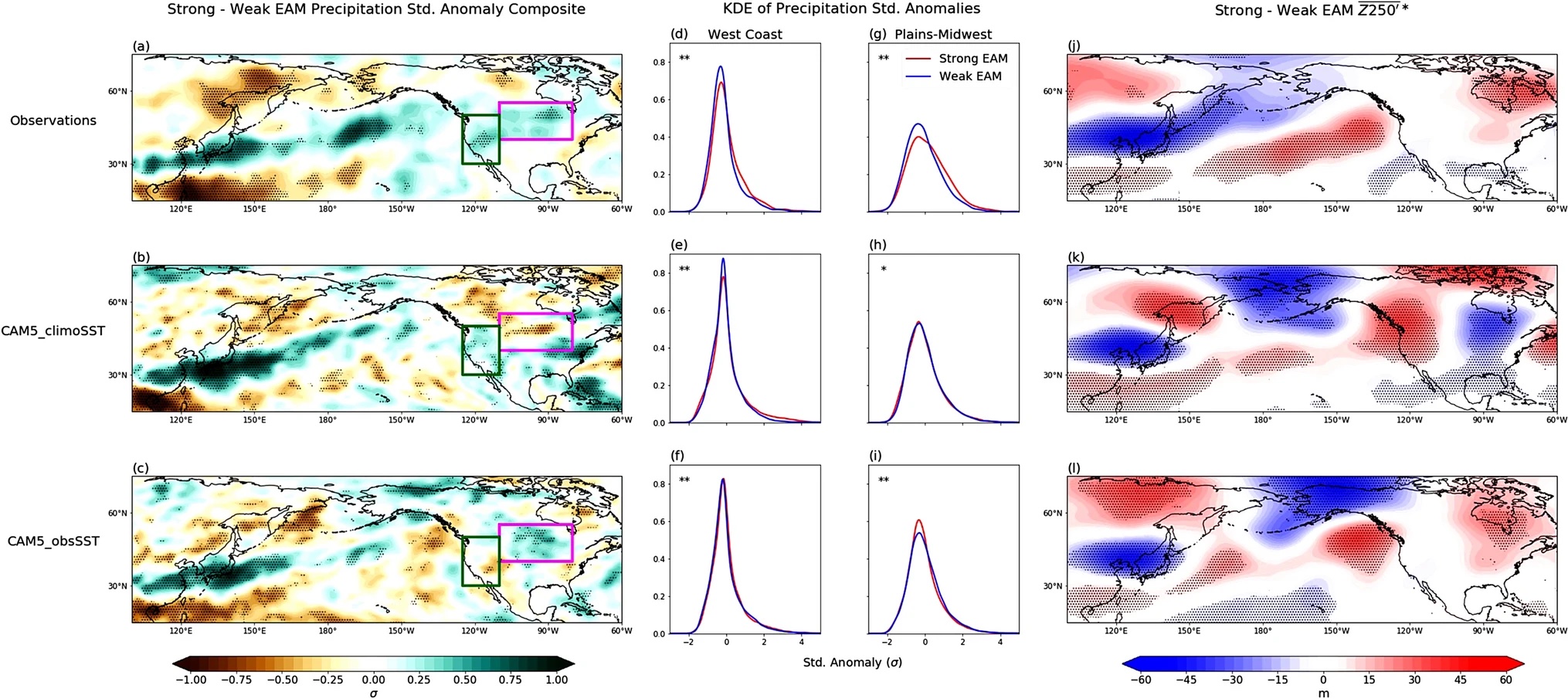
Using simpler climate models, we found the location of EAM heating greatly influences its teleconnection to North America and can explain climate model biases in the EAM-forced teleconnection, and jet stream mean state bias explains the ENSO-related biases. The EAM-forced teleconnection and its modulation by ENSO are well described by dry dynamics on seasonal-to-interannual timescales, including the constructive (destructive) interference of El Niño (La Niña) and the EAM signals.
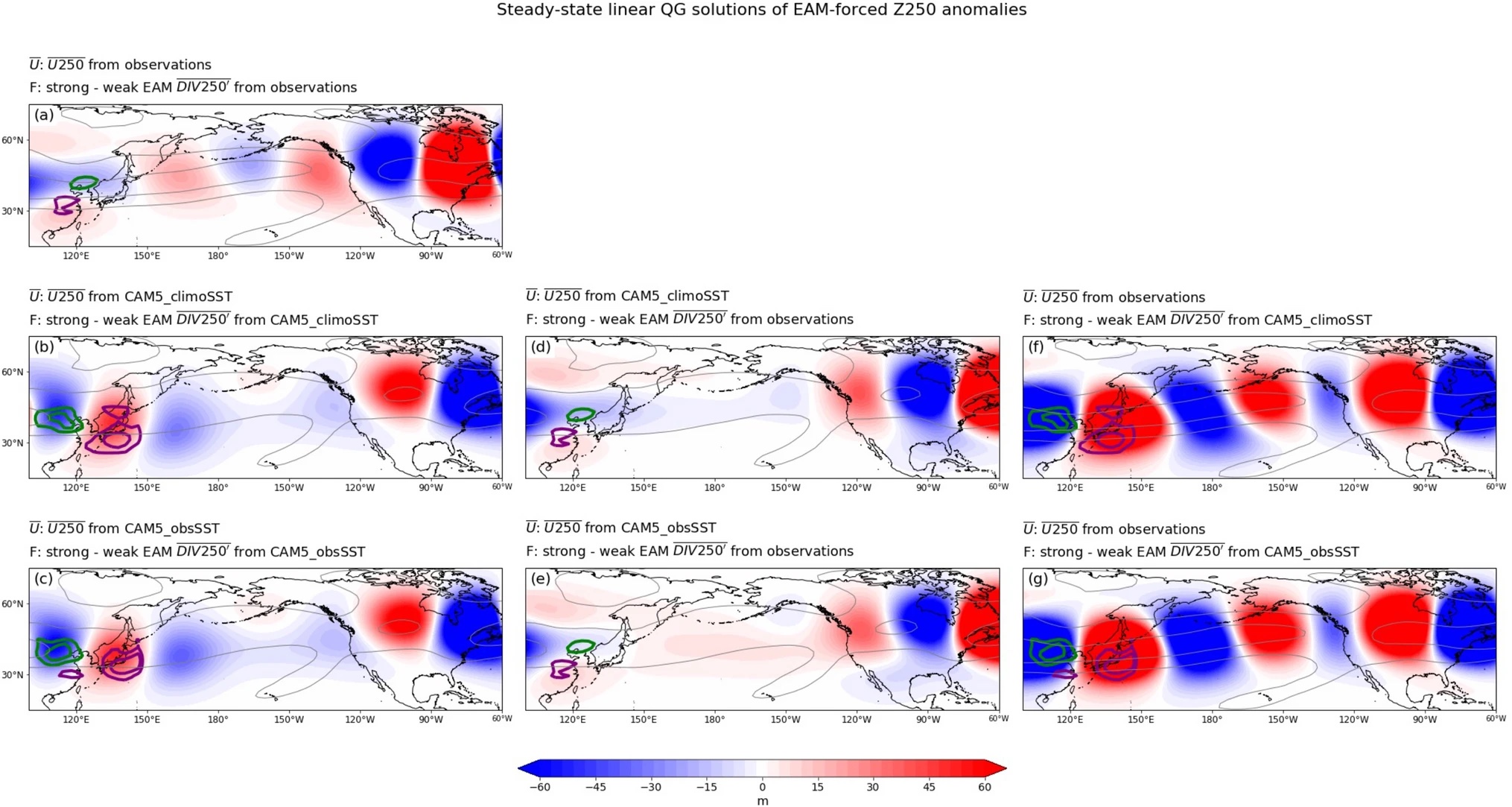
We also tested whether monsoon variability can influence Great Plains rainfall variability on the subseasonal timescale using causal effect networks and causal maps. In Malloy and Kirtman (2023), we found that active EAM is causally linked to Great Plains LLJ strengthening and active Great Plains convection. The time between EAM-related anomalies and Great Plains rainfall anomalies can be ~2 weeks, suggesting that subseasonal monsoon variability may offer an opportunity to predict Great Plains rainfall on subseasonal timescales.
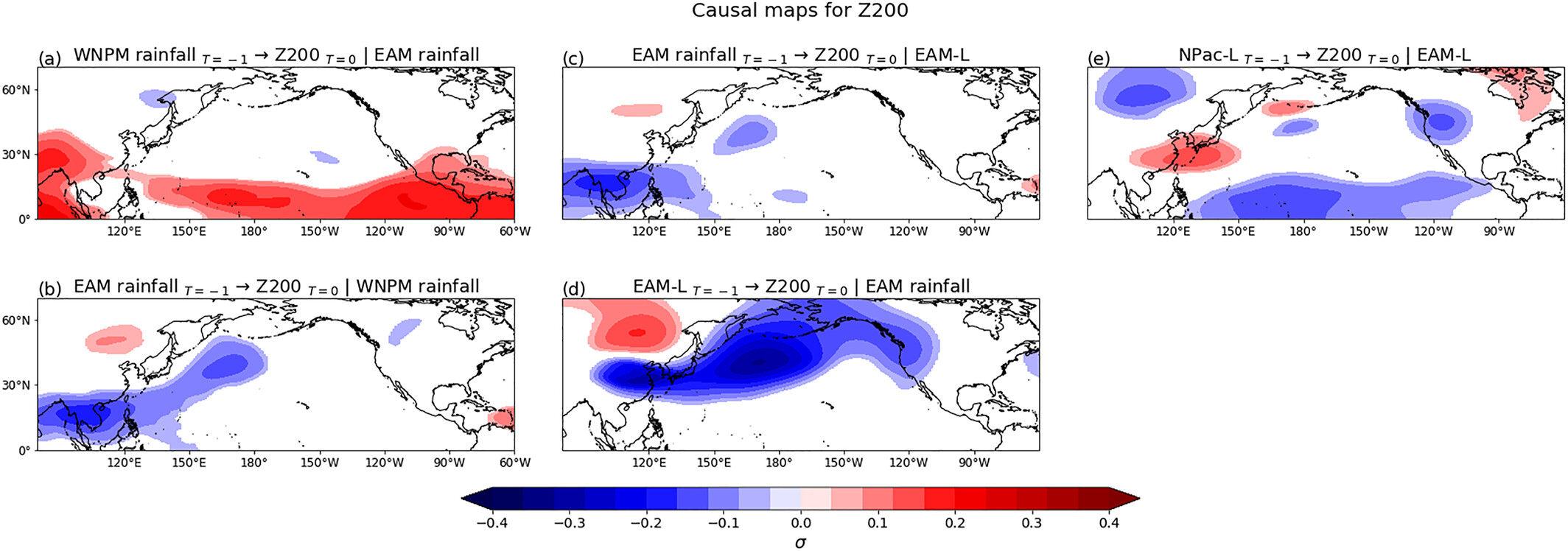

Climate Modulation of U.S. Severe Convective Storm Activity
Because observational records related to SCSs are either short or inhomogenous in time-space, it is challenging to detect robust climate links and make observation-based estimates of risk. Therefore, we have developed empirical strategies to downscale SCS activity from environmental conditions provided in reanalysis or climate (forecast) models. In Malloy et al. (2023), we developed an empirical model that predicts U.S. cloud-to-ground lightning counts from convective variables. The model well describes daily and seasonal variability of lightning and was used to detect links between ENSO and regional lightning (and hence, thunderstorm) activity.
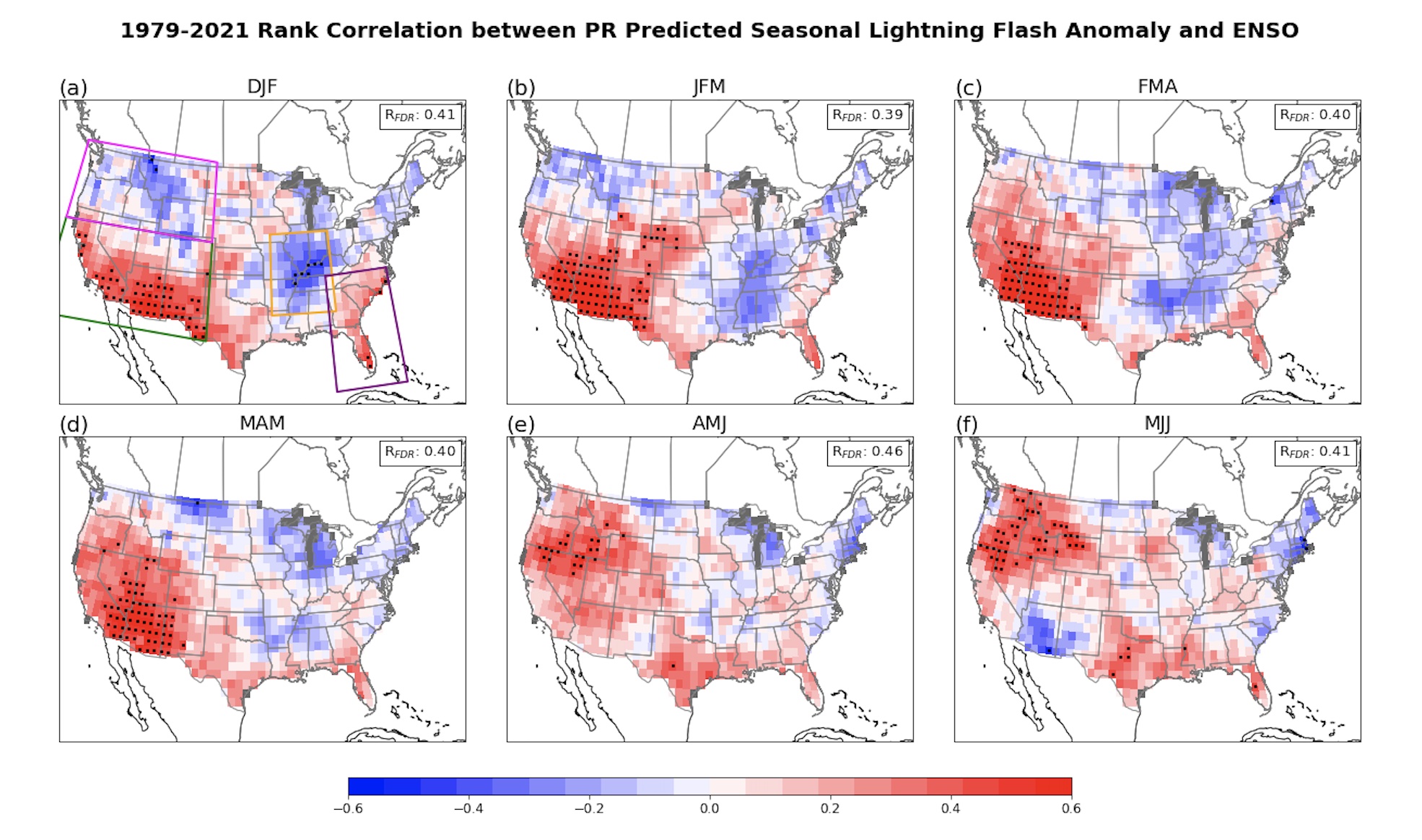
We have also developed a tornado outbreak index predicts (1) a U.S. probability map for outbreak-level tornadoes and (2) the expected number and probability distribution of total U.S. outbreak-level tornadoes (Malloy and Tippett 2024). The included stochastic component allows for a range of outcomes to be generated (i.e., synthetic event set). We have used the model to investigate modulation of tornado outbreak activity from ENSO and weather regimes (Tippett et al. 2024, in revision) and to detect trends in U.S. tornado outbreak activity.
